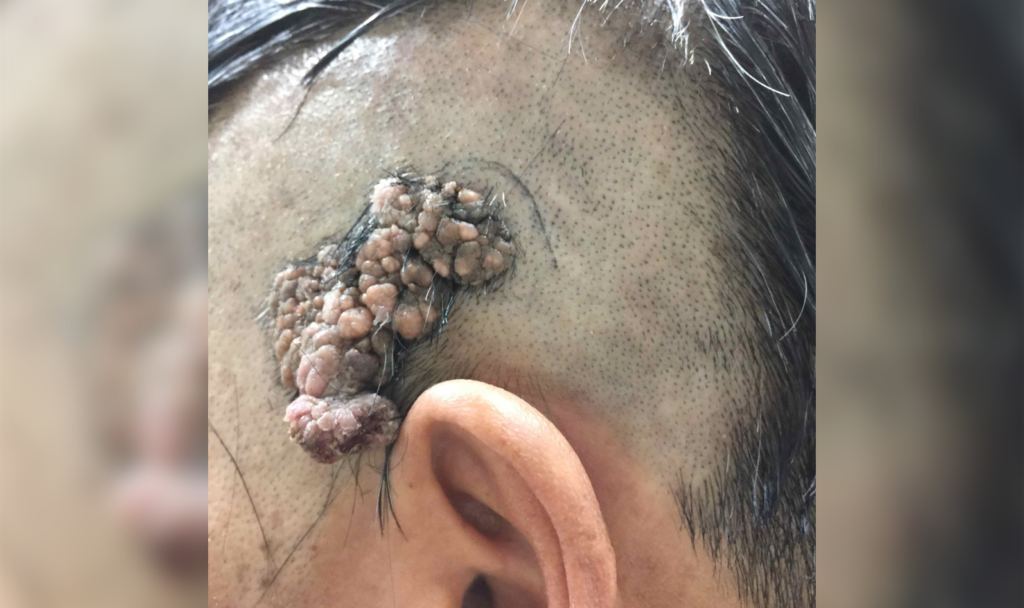
A 12-year-old presents with a progressively enlarging, itchy lesion on the scalp. It has been present since birth. This verrucous skin-colored and brown plaque on the scalp is known as a verrucous epidermal nevus. This lesion is a benign epidermal growth. It can occur anywhere on the body along the lines of Blaschko, which track along the migration of skin cells during embryologic development.
An epidermal nevus is usually present at birth or within the first year of life and becomes more raised and often pruritic over time. They may be isolated post-zygotic mosaic mutations, but also can be seen in association with rare underlying syndromes with neurologic, ocular, and bone abnormalities.
Several genes have been identified in association with epidermal nevi including FGFR3, PIK3CA, and HRAS. Several related syndromes that have been identified, including Congenital hemidysplasia with ichthyosiform nevus and limb defects (CHILD) syndrome, and Schimmelpenning syndrome.
Topical calcipotriol may sometimes reduce the thickness of the skin, however, there are no particularly successful treatments available. In some cases, laser treatment or surgical removal can be performed.
Further Reading
References
- Asch S, Sugarman JL. Epidermal nevus syndromes: New insights into whorls and swirls. Pediatr Dermatol. 2018 Jan;35(1):21-29. doi: 10.1111/pde.13273. Epub 2017 Oct 16. PMID: 29044700.
- Brandling-Bennett HA, Morel KD. Epidermal nevi. Pediatr Clin North Am. 2010 Oct;57(5):1177-98. doi: 10.1016/j.pcl.2010.07.004. PMID: 20888465.
- Epidermal naevi (Nevi) | dermnet nz [Internet]. [cited 2021 Nov 26]. Available from: https://dermnetnz.org/topics/epidermal-naevi
- Epidermal nevus: medlineplus genetics [Internet]. [cited 2022 May 3]. Available from: https://medlineplus.gov/genetics/condition/epidermal-nevus/
- Epidermal naevus syndromes | DermNet NZ [Internet]. [cited 2022 May 3]. Available from: https://dermnetnz.org/topics/epidermal-naevus-syndromes
- Moody MN, Landau JM, Goldberg LH. Nevus sebaceous revisited: nevus sebaceous revisited. Pediatric Dermatology. 2012 Jan;29(1):15–23.
- Paller AS, Syder AJ, Chan YM, Yu QC, Hutton E, Tadini G, Fuchs E. Genetic and clinical mosaicism in a type of epidermal nevus. N Engl J Med. 1994 Nov 24;331(21):1408-15. doi: 10.1056/NEJM199411243312103. PMID: 7526210.
Want more clinical cases?
Join Figure 1 for free and start securely collaborating with other verified healthcare professionals on more than 100,000 real-world medical cases just like this one.